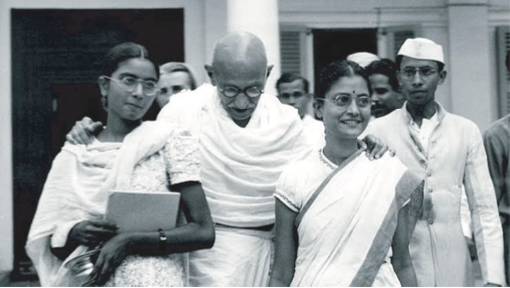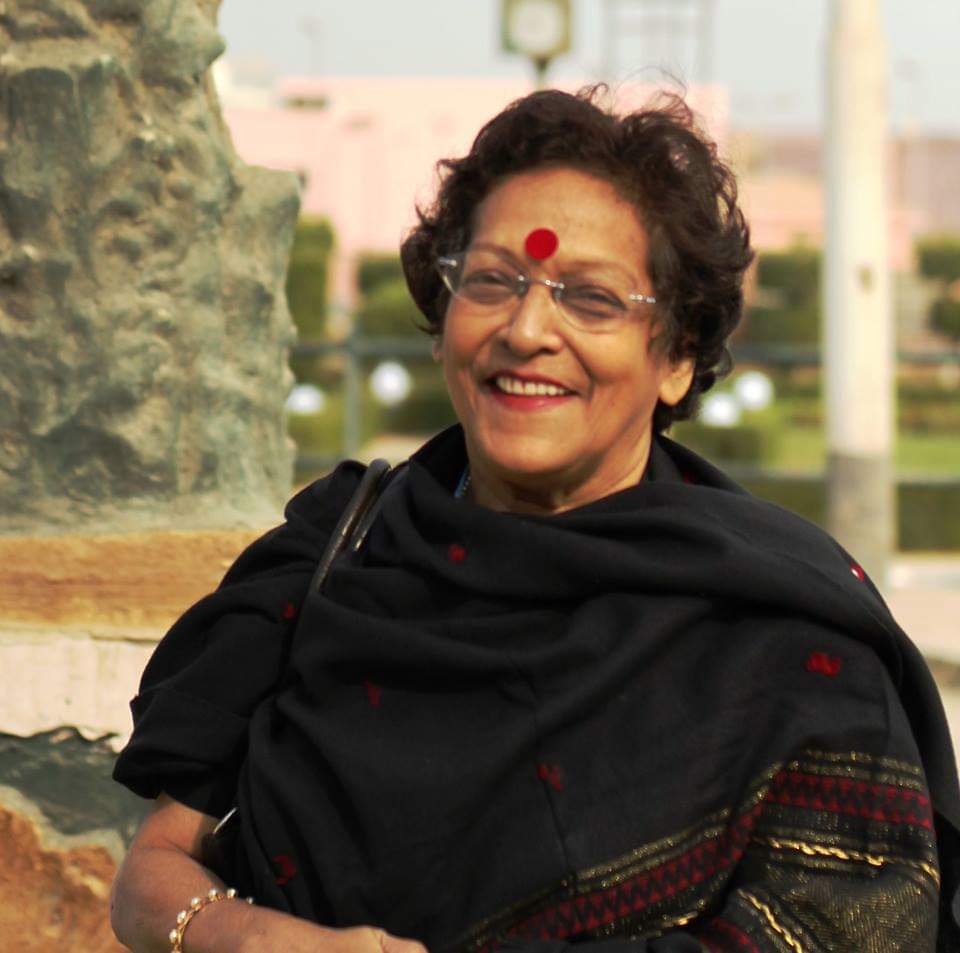We leave all icons, celebrities, great stars and national leaders alone when it comes to questioning their ideologies and their philosophies, especially after they are no more. Mahatma Gandhi is one of them. Any critique of Gandhi is beyond imagination. He has been labelled the “Father of the Nation” and was instrumental in the creation of an independent India. True. But what ideas did he nurture about the role of women in society and in political participation? Were they patriarchal? Were they biased against women?
Shyam Benegal’s film The Making of the Mahatma, or, Anil Kapoor’s film Gandhi, My Father and a noted play Gandhi Versus Gandhi have shown quite clearly his attitude and treatment of his wife Kasturba Gandhi and his turbulent relationship with his eldest son Harilal Gandhi who died unattended in a Bombay Hospital of tuberculosis just a few months after his father was assassinated. Kasturba`s marital life with Gandhi was affected by Gandhi’s total abstinence from sex after the four sons were born. Did he practice this abstinence with her consent? Or was the decision his alone? These are rhetorical questions that have the answers structured within them.
His take on women`s liberation ‘motivated’?
Extending the same idea to all Indian women, for the first time, a distinct approach to the role of women in society began to make itself felt, so far as Gandhi’s thoughts are concerned. The leadership realised that women were “condemned to slavery.” Thus, the leadership within the Indian National Congress under Gandhi and Nehru with Gandhi taking the lead, sought to liberalise the family so that women’s activities in the public domain “within politically acceptable limits”, could expand. What exactly did the phrase ‘politically acceptable limits’ imply? Politically acceptable to whom? Who determined the ‘limits’ of this so-called ‘political acceptance’? The leaders themselves who were men? It is thus clear that the motives for bringing women out to participate in the public sphere were largely in the interests of men and were also determined and decided by men. So, what kind of ‘liberation’ was this from ‘domestic slavery’?
Women were urged to give up the purdah, and to liberate themselves from their family-centred roles to participate in the country’s struggle for freedom. Gandhi viewed women’s oppression as historic and nearly universal.He lamented (a) their non-participation in social and political affairs, (b) their sexual subjugation to their role as ‘man’s plaything’, (c) their lack of autonomy in the use of their bodies, and (d) their backward consciousness which made them accept their low social position. But he also believed that women had the courage, the endurance and the moral strength to deal with these oppressions. In his view, these qualities made women “natural leaders of a non-violent struggle against an unjust socio-political system. He wanted to feminise politics because women had the potential to give a blow to the established socio-political power structure and they could be the vanguards of a non-violent struggle for a just and non-exploitative socio-political order.”
It is interesting to note the views of the same Gandhi when he speaks on women`s education. “In framing any scheme of women’s education, this cardinal truth must be constantly kept in mind: man is supreme in the outward activities of a married world, and therefore, it is in the fitness of things that he should have a greater knowledge thereof. On the other hand, home life is entirely the sphere of women, and therefore, in domestic affairs, in the upbringing of children and in their education, women ought to have more knowledge.” Gandhi reinforced the sexual division of labour which led, according to Karl Marx, to inequality between the sexes. Instead of decrying it, Gandhi supported the division.
In the first non-cooperation movement, women were called to participate within the limitations of their social conditions. Gandhi placed emphasis on spinning because it could be carried out within the home. Women were encouraged to tear down the veil, come out to attend street meetings and join processions. A 1000 women marched in a procession in Bombay to oppose the visit of the Prince of Wales in November 1921.
In the Bardoli Satyagraha in 1928, women were not seen at first. Yet, from April onward, they outnumbered men in political gatherings and even held their own separate meetings. The year 1930 began with a pledge for Independence. In March, Gandhi announced that he would launch a civil disobedience movement by breaking the Salt Law. His plan was to walk from Sabarmati Ashram to Dandi, a deserted village on the sea coast 200 miles away to make salt on the beach there. He did not include women in the first batch of 79 refusing their request to take four or five women with him. But as Gandhi walked towards Dandi, women were everywhere on the way to greet him and to hear him speak.
At Abhrama on April 10, 1930, there were 2000 women in an audience of 5000. About 560 women received him when he arrived at Dandi. But some women refused to be restrained in this manner. Khurshedbehn Naoroji and Mridula Sarabhai jumped into the struggle despite strict orders not to do so. They were both arrested in Ahmedabad. Ahmedabad witnessed a grand procession of khadi-clad women on April 23. The procession stretched to half a mile, and was managed by saffron-saree-clad volunteers of Videshi Kapade Bahiskar Samiti. On 1 June 1930, 11 women took part in the Wadala raid organised by the Bombay Provincial Congress Committee in which Lilawati Munshi took an active part. They were all arrested and detained in the Salt Prevention Office at Wadala.
Setting boundaries for women in politics
Men were not opposed to Gandhi drawing their women out onto the streets to participate in the nationalist movement because Gandhi did not challenge the patriarchal order. He did not disturb the status quo of the conventional Indian family. He held that woman was not inferior to man, but her role was different. Political participation was not to be at the cost of domestic duties. Service to her husband, family and country was a woman’s primary duty. Gandhi advised women who wished to dedicate themselves totally to the cause of freedom to remain unmarried. Dr.Susheela Nayar and Ushabehn Thakkar are examples of this Gandhian rule.
For couples who were similarly dedicated, he advised celibacy and no children. Acharya J.B.Kripalani and his wife Sucheta followed this ideal. The power-equation within the home remained undisturbed. Gandhi spoke of Sita as the ideal wife. His aim was to use the traditional role of the Indian woman to extend these to the wider political sphere. The logic was simple if not simplistic: she was used to sacrificing for her husband, children, family; therefore, she was now being asked to sacrifice for her country’s freedom.
According to him, since relationships between the sexes were not unlike those between other groups unequal in power, the liberation of women was inextricably tied to the liberation of India, the removal of untouchability and the amelioration of the economic condition of the masses. Gandhi deplored the fact that women who belonged to women’s organisations were out of touch with their rural sisters. He preferred them to spend more time to find out about the lives of women in villages.
Gandhi critiqued women leaders for ‘foolishly’ thinking that any law or code could solve the problems of rural women. Many elite women seemed to agree. Yet, they continued to work for the reform of the legal system. They were neither foolish nor selfish. They did not agree with Gandhi about the direction of social change. They aimed at gaining legal measures to grant women some degree of equality. Measures were designed to (a) equalise women’s right to divorce, (b) systematise marriage, (c) give protection in the case of desertion, (d) grant them guardianship over their children, and (e) make it possible for females to obtain a share in the family property. Though the gains were less than originally hoped for, there was victory in terms of organisation and systematisation of the law.
All this sums up Gandhi’s ambivalence on the political role of women in pre-independence India. The leadership was against the excessive subordination of women by men. But not to the fact that women generally played a socially subordinate role. Both liberals and radicals in the nationalist movement regarded women’s political participation as an extension of their filial roles within the home. Women were mobilised to participate in the freedom movement because they were ideally suited to carry on non-violent, passive resistance, which the hierarchical structure of the traditional family had moulded them into. The Gandhian leadership urged women to function in the order of husband, family and country. If there was a conflict between family and country, filial responsibilities would come first. Women’s political participation was not to be at the cost of their domestic duties.


 [/column]
[/column]